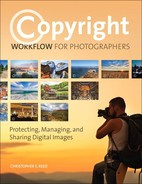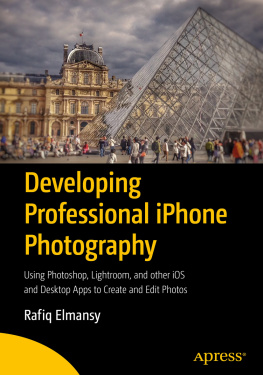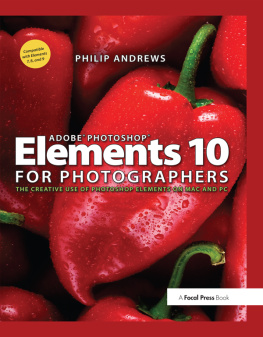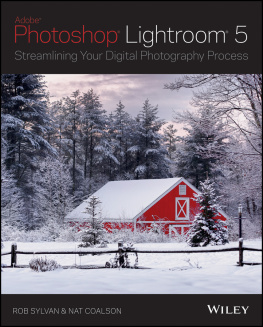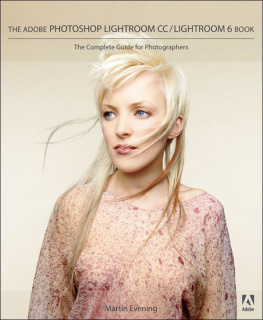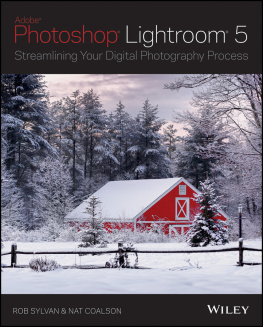In memory of David Hitchcock, 1966-2013. A talented photographer and one of the finest people Ive ever known. I miss you, my friend.

Photo by Julia Fitzgerald
About the Author
Mark Fitzgerald cut his photographic teeth in the professional photo-lab business, working for one of the largest independent labs in the U.S. It was an environment rich with talented people willing to share everything they knew (and sometimes their camera gear) with a young photographer. In 1999, as the real possibilities of digital photography began to emerge, Mark left the lab business and devoted two years to exploring digital photography. He became an Adobe Certified Photoshop Expert and has been one for the last ten years.
Now Mark specializes in helping all sorts of photographers, ranging from established professionals to people who are just finding their passion for photography. Mark is adjunct faculty at the Portland Art Institute and teaches regularly at Newspace Center for Photography. He also specializes in private training, where he helps individual photographers solve their technical and creative problems.
In addition to being a sought-after teacher, Mark is also an active photographer. While in the lab business, he also worked as a freelance commercial photographer, photographing a range of subjects from model headshots and album covers to team photos of the San Antonio Spurs. Today, Marks focus in on fine-art photography. His photos have won awards on the local and international levels and hung in many galleries. Mark is on the National Council of the Professional Photographers of America, and is currently president of the Portland Metropolitan Photographers Association in Portland, Oregon, where he lives with his wife, three dogs, and a cat named Chester. To learn more about Mark, visit www.ddroom.com.
Other Wiley titles by Mark Fitzgerald are Adobe Photoshop Lightroom and Photoshop Workflow Bible , Adobe Photoshop CS4 after the Shoot , and Adobe CS5 Restoration and Retouching for Digital Photographers Only .
Introduction
P hotography should be fun. But it isnt when you arent satisfied with your photos or you cant even find them in the first place. I know how frustrating and stressful digital photography postproduction can be because I specialize in helping photographers manage todays complex workflow tools. Ive sat beside countless photographers who are feeling the same stress and frustration you may feel with your workflow. I know the postproduction process can seem like an impossible maze. I also know that when someone shows you a simple path through a maze, the maze vanishes and only the path remains. My intention in writing Zen of Postproduction is to guide you through the photographic postproduction maze and reveal a path that works for you and your images.
About me
As someone whos made his living in the world of photography for many years, Ive had the benefit of experiencing both the traditional and digital darkrooms. In the early days, I worked in large photo labs helping professional photographers get the most from their film negatives and slides. I left the lab industry just as the digital revolution was beginning to impact photography. I dedicated myself to learning new technologies that were turning the photo world upside down. After two years of intense self-learning and discovery, I began helping other photographers learn the skills they needed to create the kinds of images they wanted. That was 12 years ago.
Now, Im a photographer who teaches other photographers to master todays postproduction tools. I teach classes and workshops and meet with photographers for private training on an almost daily basis. Portland, Oregon, has a rich photography culture, and Im fortunate to be part of it. I get to meet all sorts of interesting and talented photographers from full-time pros to retired folks who are finally finding time to indulge their artistic passions. Ive taught many of these photographers, and Ive also learned from them. Although some call me a master, I know there is always more to learn about making great images.
Whats in this book?
Because Lightroom is at the center of the modern photographers workflow, much of this book is devoted to explaining how to use Lightroom to organize, edit, and output photos. Many photographers can accomplish everything they desire from their postproduction using only Lightroom. However, Lightroom does have limitations in certain situations, such as retouching, so its necessary for some photographers to have a working knowledge of Photoshop. The central focus of Zen of Postproduction is on using Lightroom to create a simple workflow that every photographer can use. Additional chapters cover important Photoshop features that some photographers need to complete their postproduction workflow.
I begin by describing a few basic concepts in Chapter 1 and then jump straight into Lightroom in Chapter 2 by describing important Lightroom concepts, as well as preferences and general Tips about using the Lightroom workspace. In Chapter 3. I show you how to import new and existing photos quickly and efficiently. Chapters 4 and 5 detail methods for getting organized, including colored labels, collections, and the all-important keywords. Chapters 6 and 7 move into editing photos by describing basic and advanced methods for adjusting tone and color. Then Chapters 8 and 9 take you deeper into Lightrooms Develop module and its powerful tools and techniques. Chapter 10 begins the transition to the Photoshop section of the book by describing best practices for moving photos back and forth between Lightroom and Photoshop. Chapters 11 through 14 cover key Photoshop tools and techniques, such as masking and retouching, for readers who need special tools to complete their workflows. Chapter 15 surveys over a dozen plugins (third-party programs) that can be used with Lightroom instead of Photoshop, or in addition to it. Printing and exporting files for a range of uses are covered in Chapter 16. The final chapter, Chapter 17, covers Lightrooms Book, Slideshow, and Web modules, as well as the Publish Services feature so that youll be able to share your photos with just about anyone on the planet.
Tip
I recommend you use the latest version of Lightroom to get the most from this book. However, it isnt necessary to have the latest version of Photoshop to accomplish much of what I describe in the Photoshop chapters. Photoshop CS4 or later will work for most of what I describe.
Naturally, it isnt possible to describe every interesting aspect of the software programs described in this book. As a teacher, I know its important to focus on the core elements necessary to creating a solid foundation. Once you have that, you have the confidence to shape the workflow that fits your needs. My intention when I set out to write this book was to give you everything you need to build that workflow and tell you about it in a way thats easy to understand.
Who should read this book?
Most of the students I interact with fall into one of two categories: photographers new to postproduction, and those who have a workflow but arent sure if its the most suitable for their particular needs. This book is designed to help both types of photographers. It details a postproduction workflow from start to finish. You dont need prior knowledge of the programs to benefit from reading and using it. If you are familiar with these programs, it could be a bonus and speed up the learning process. But I strongly recommend that you take the time to read each chapter. I know from my own learning process that its often that little gem of information you stumble across that opens doors conceptually as well as practically.



